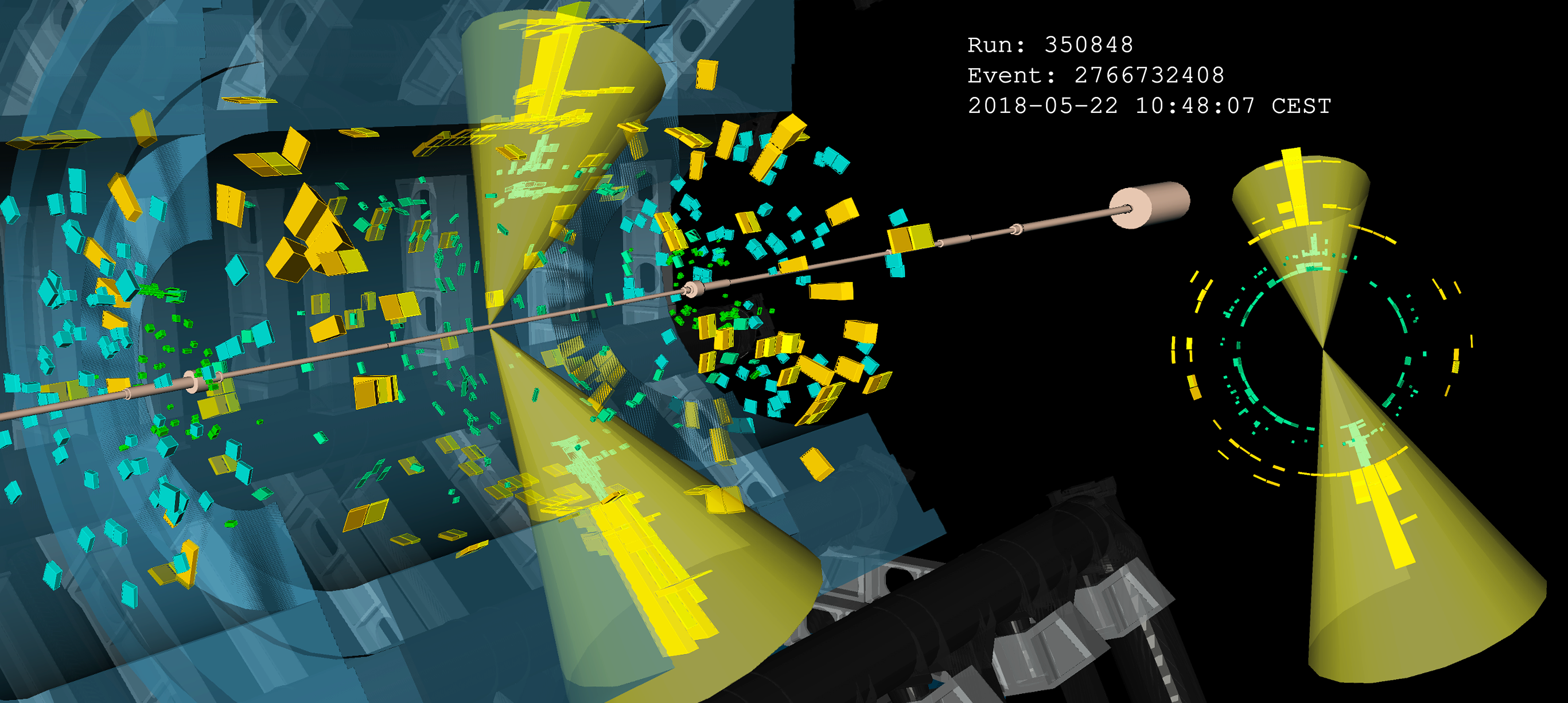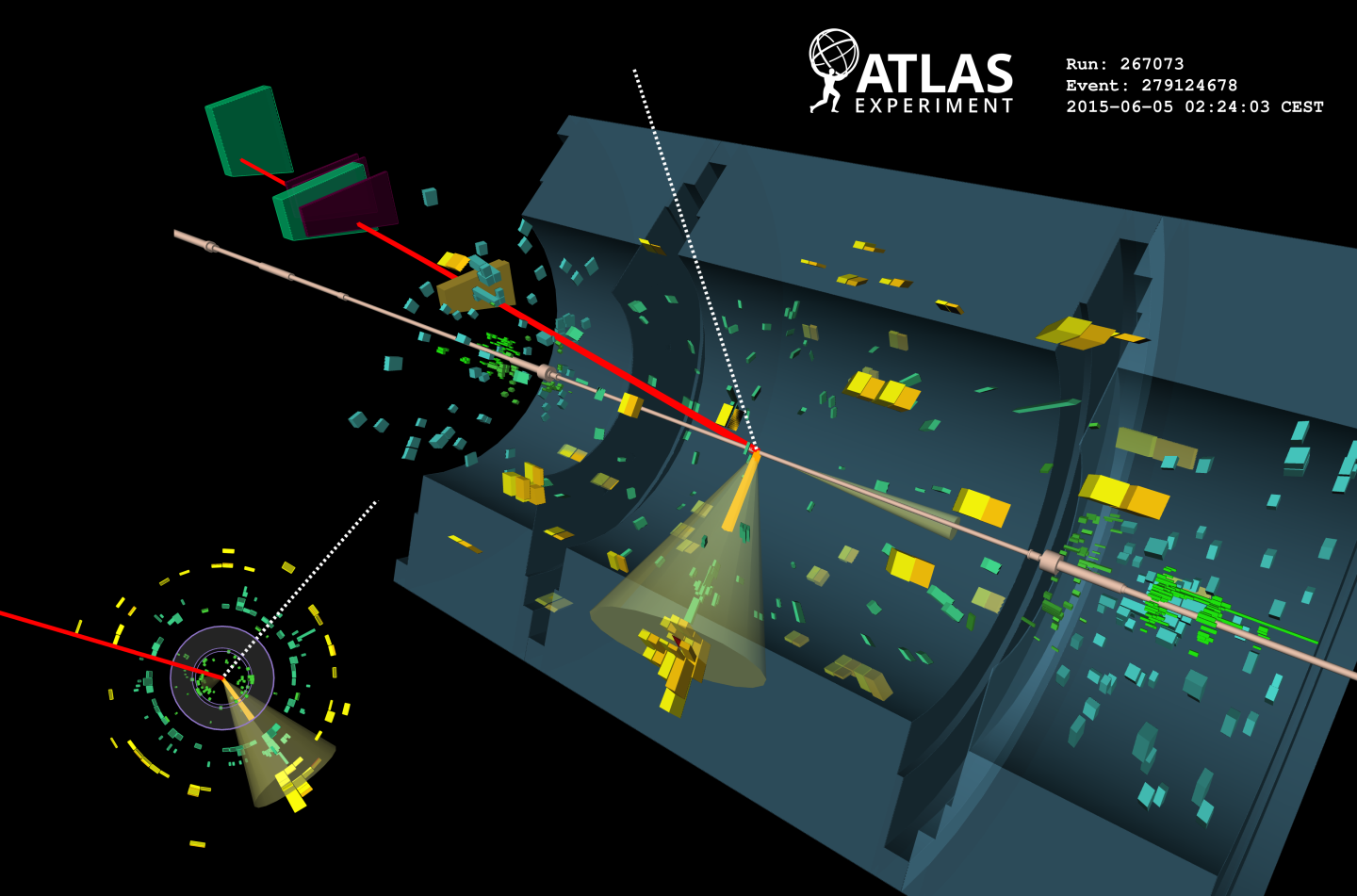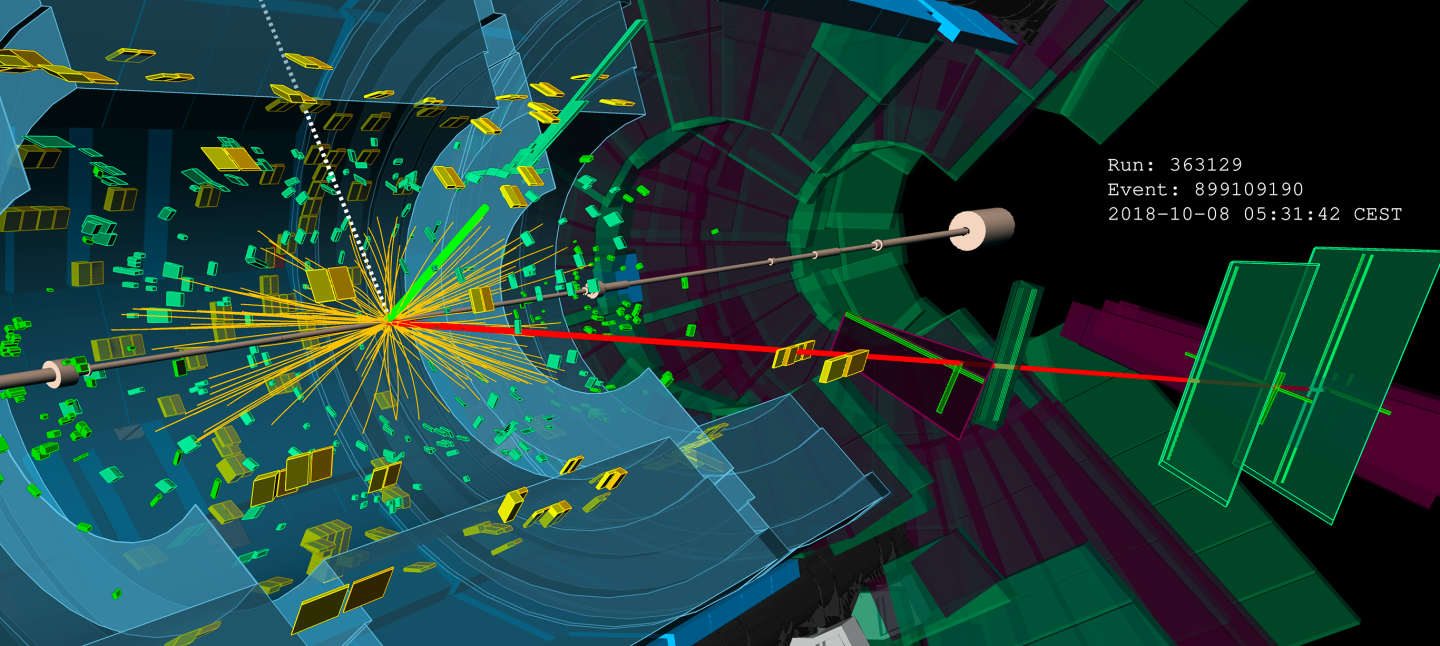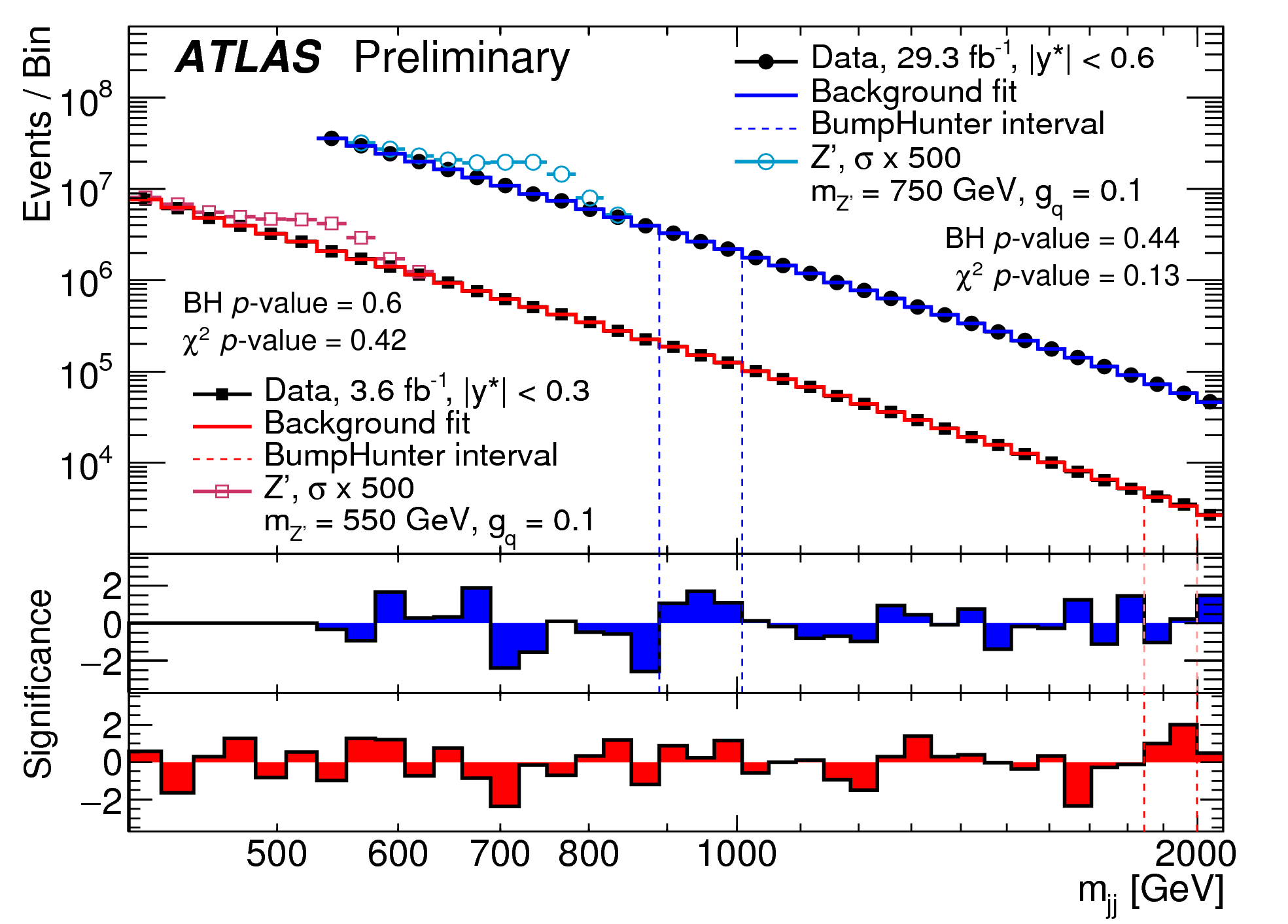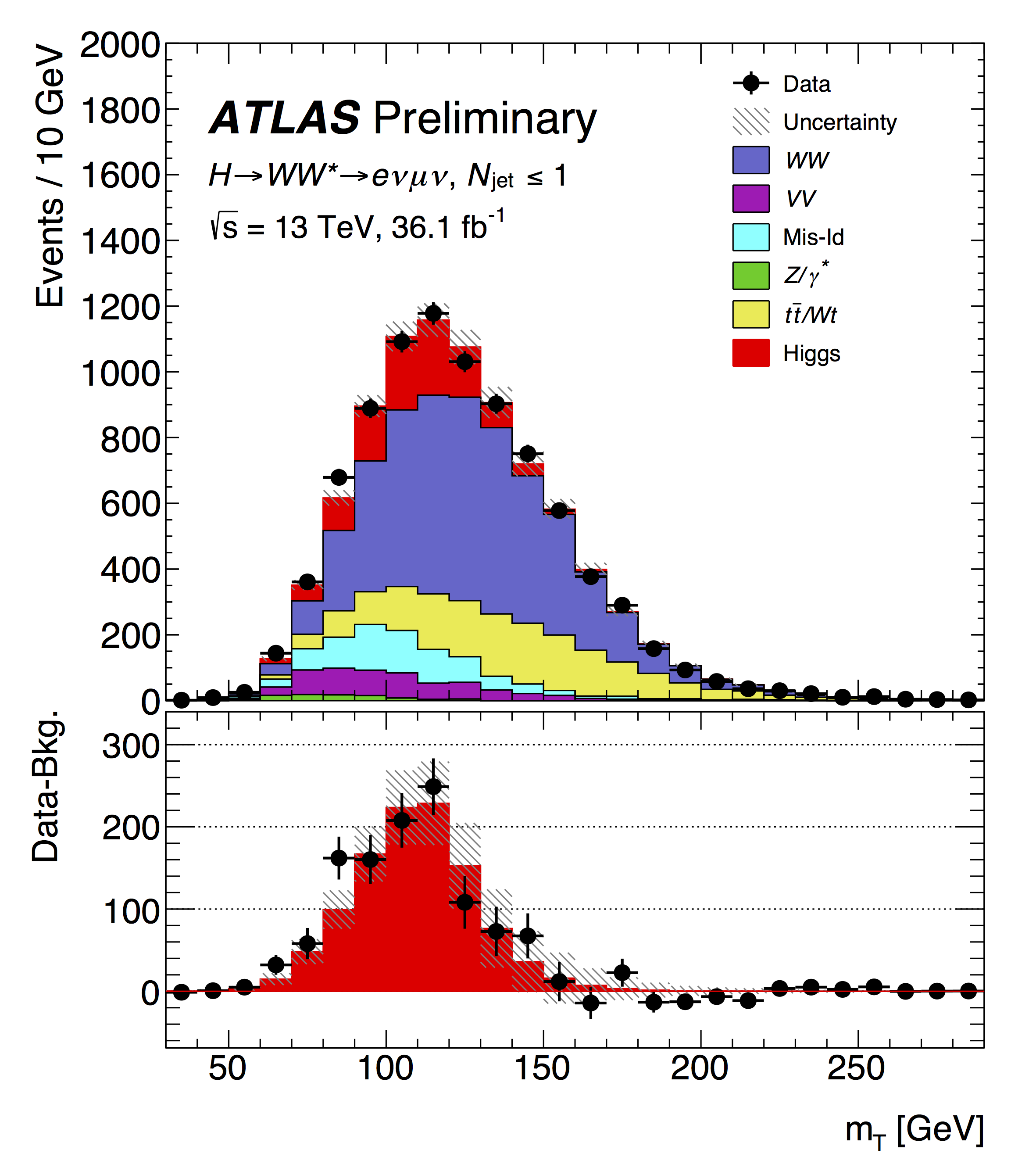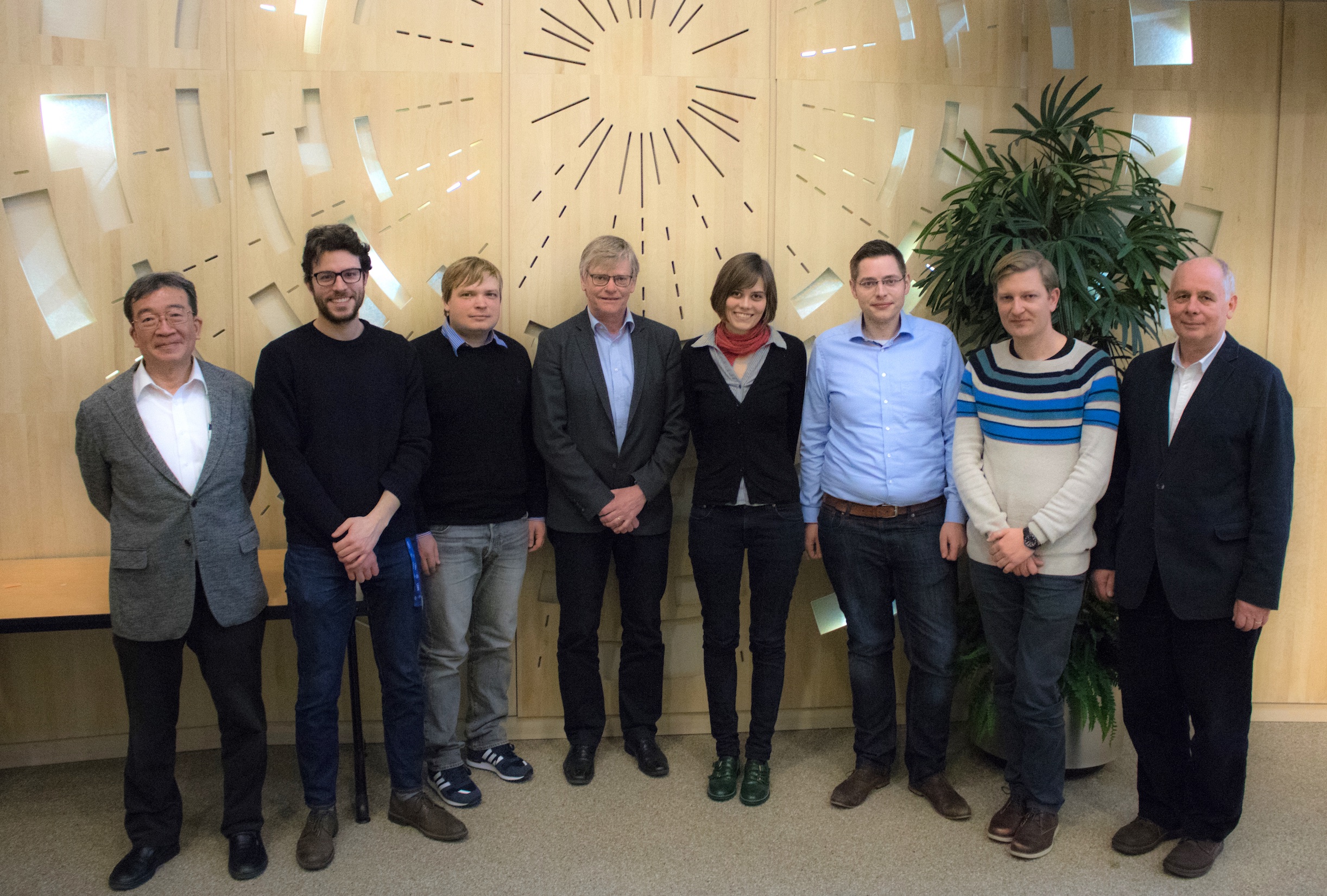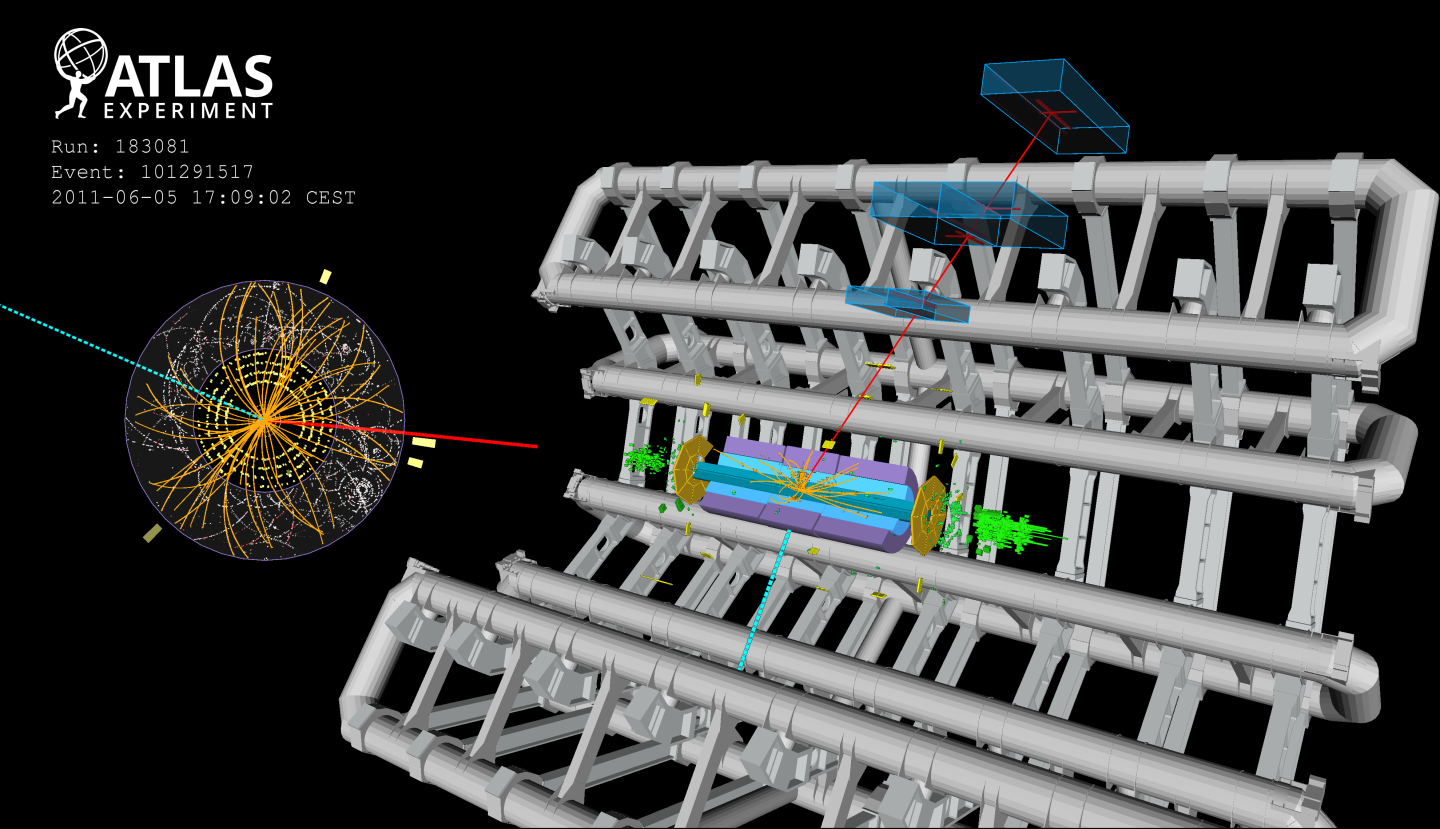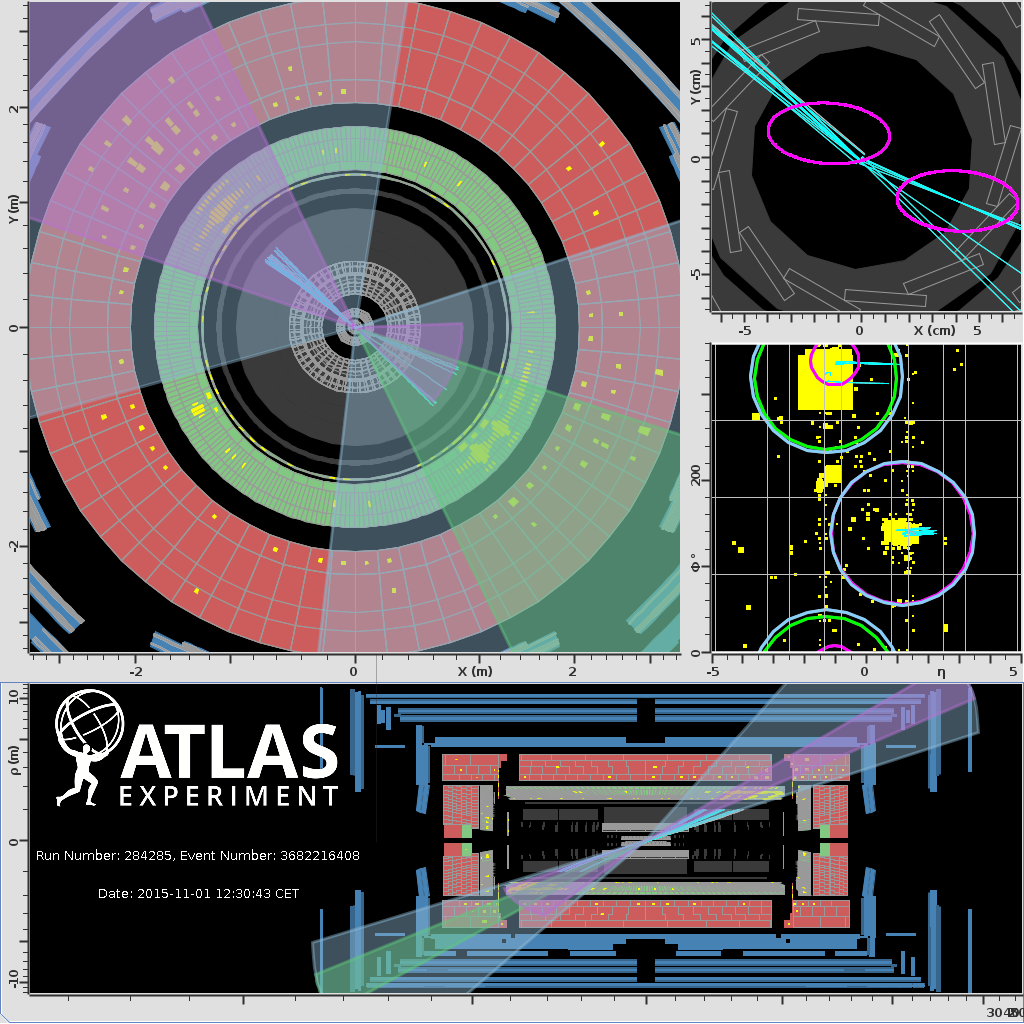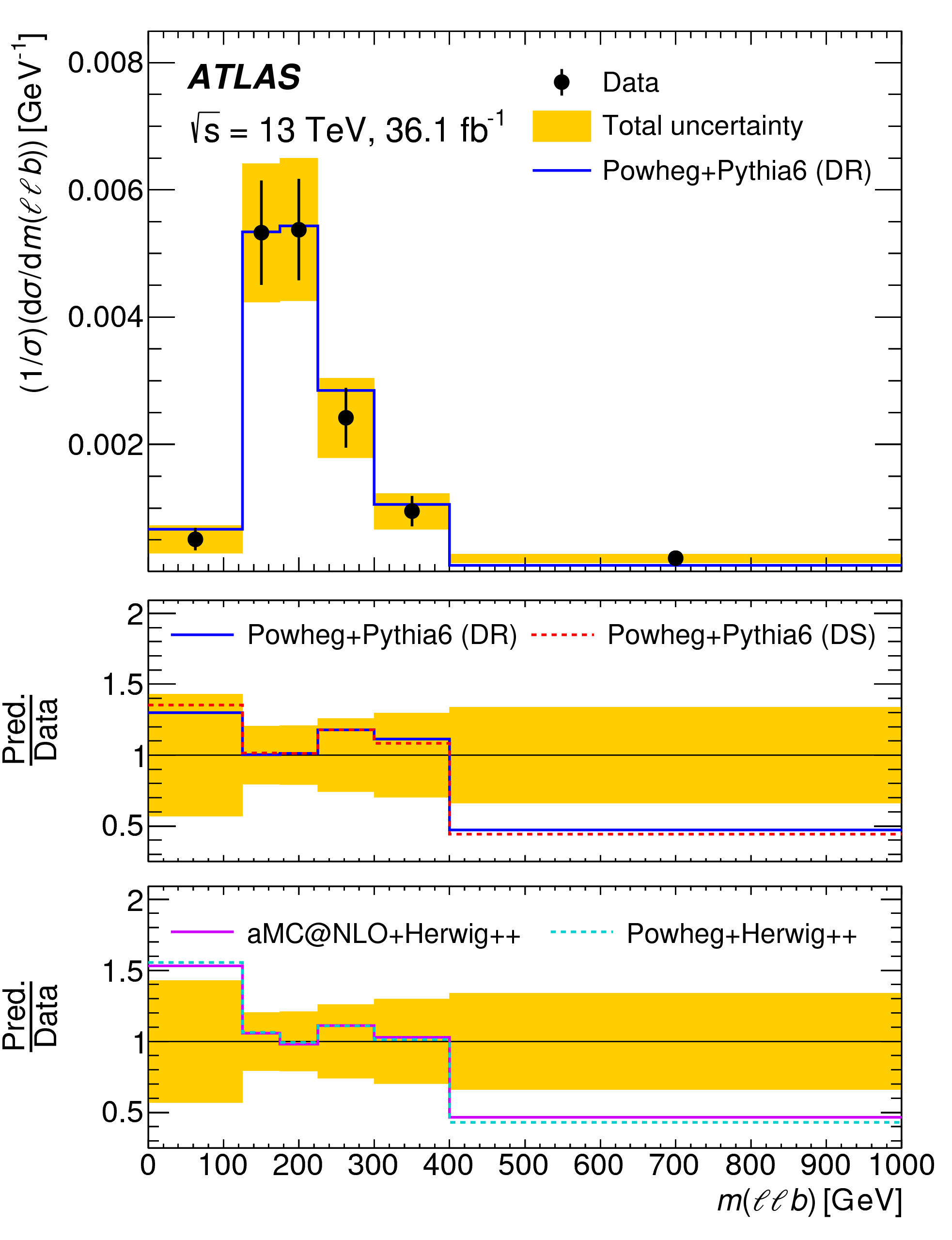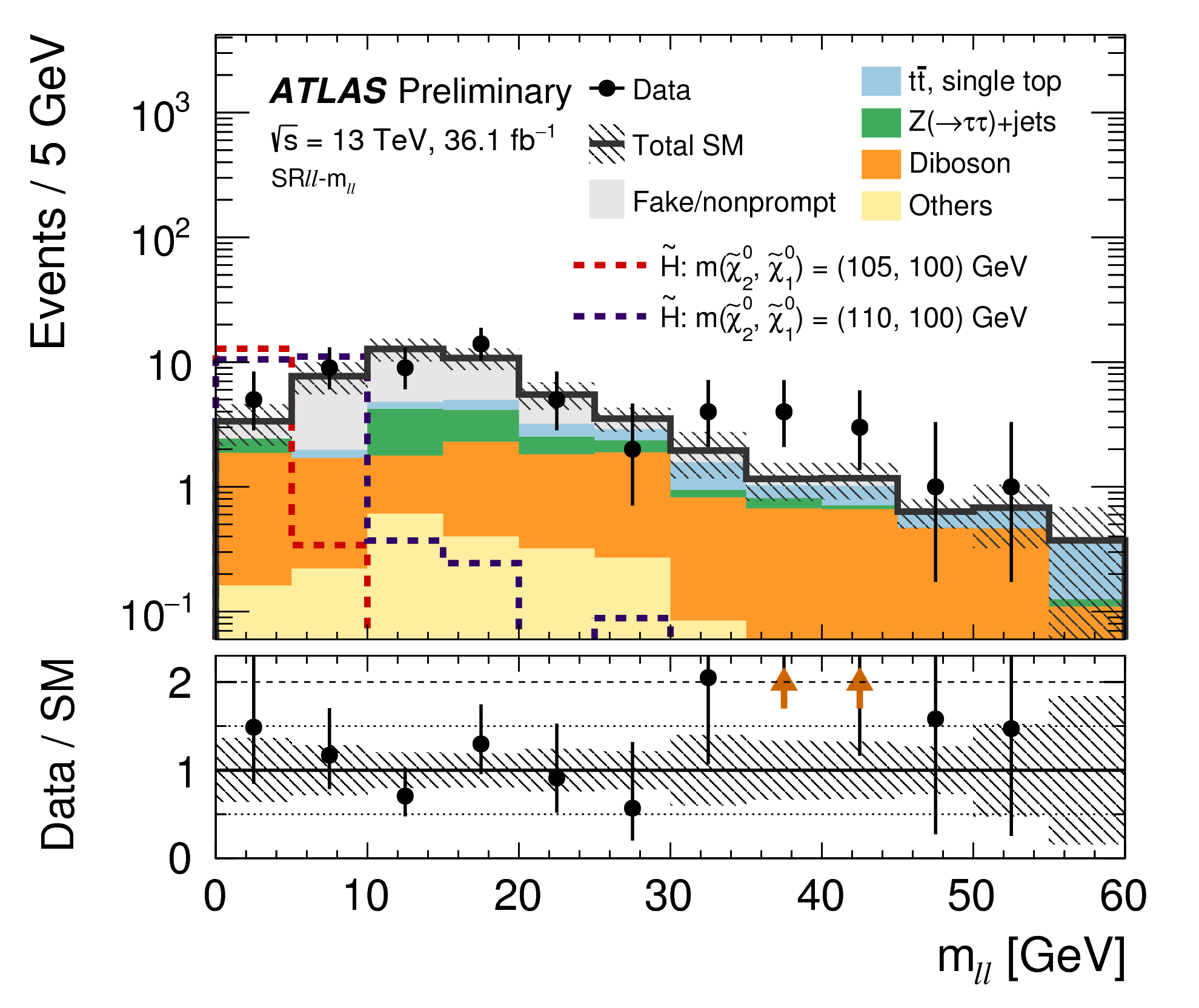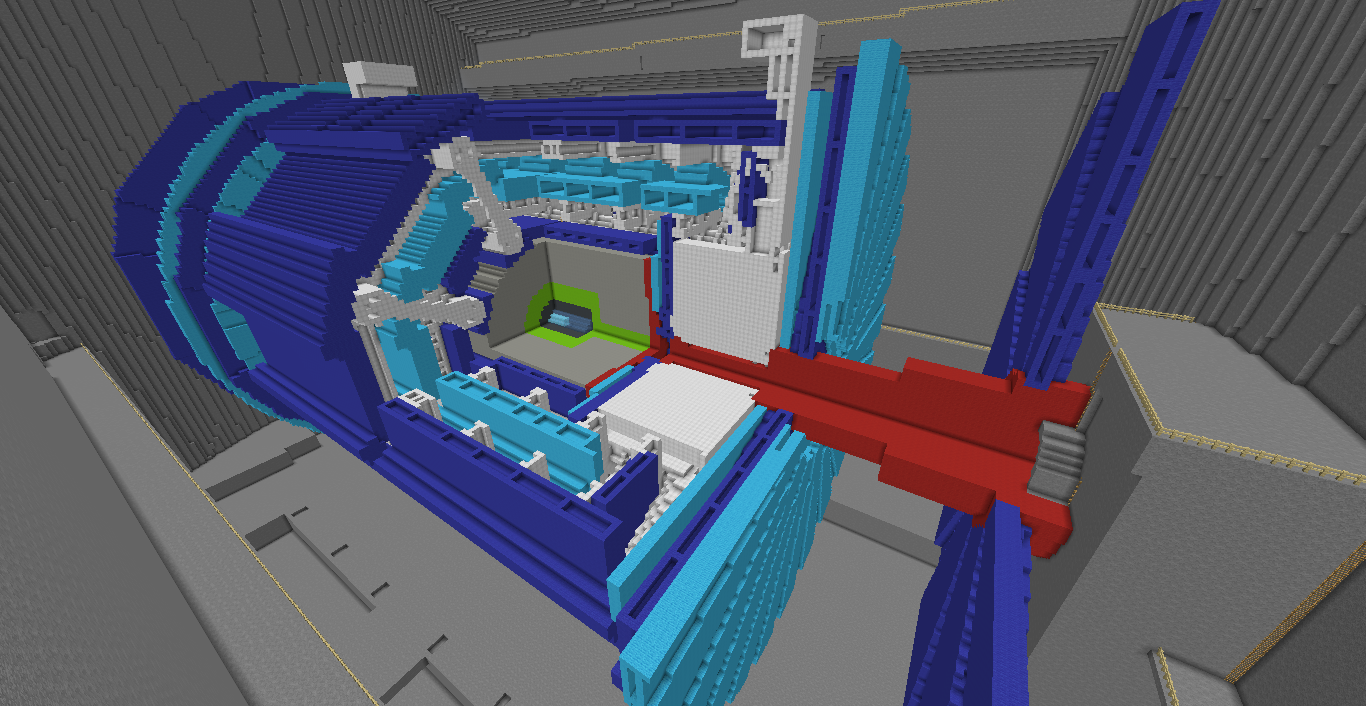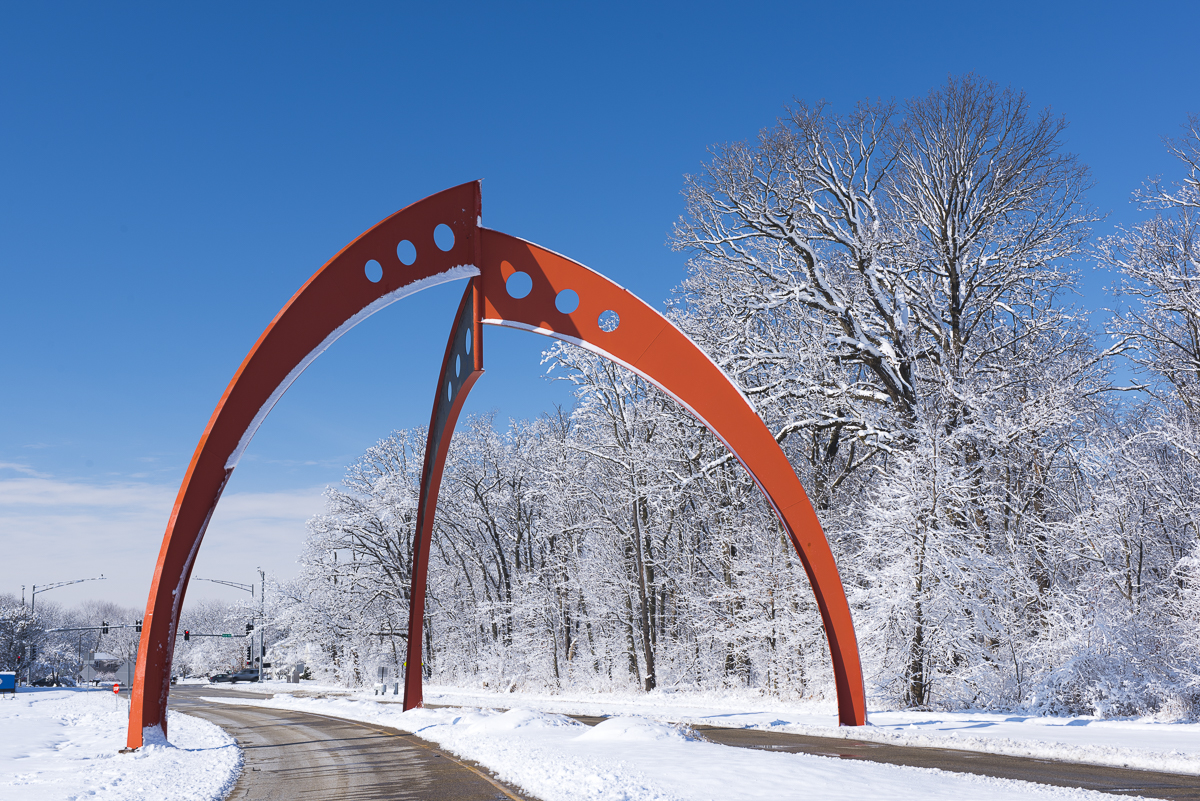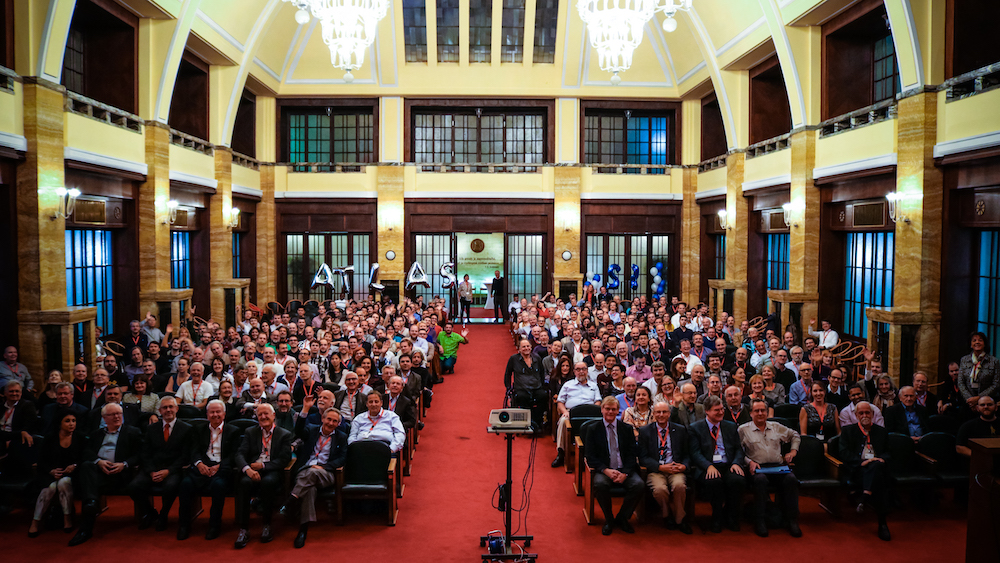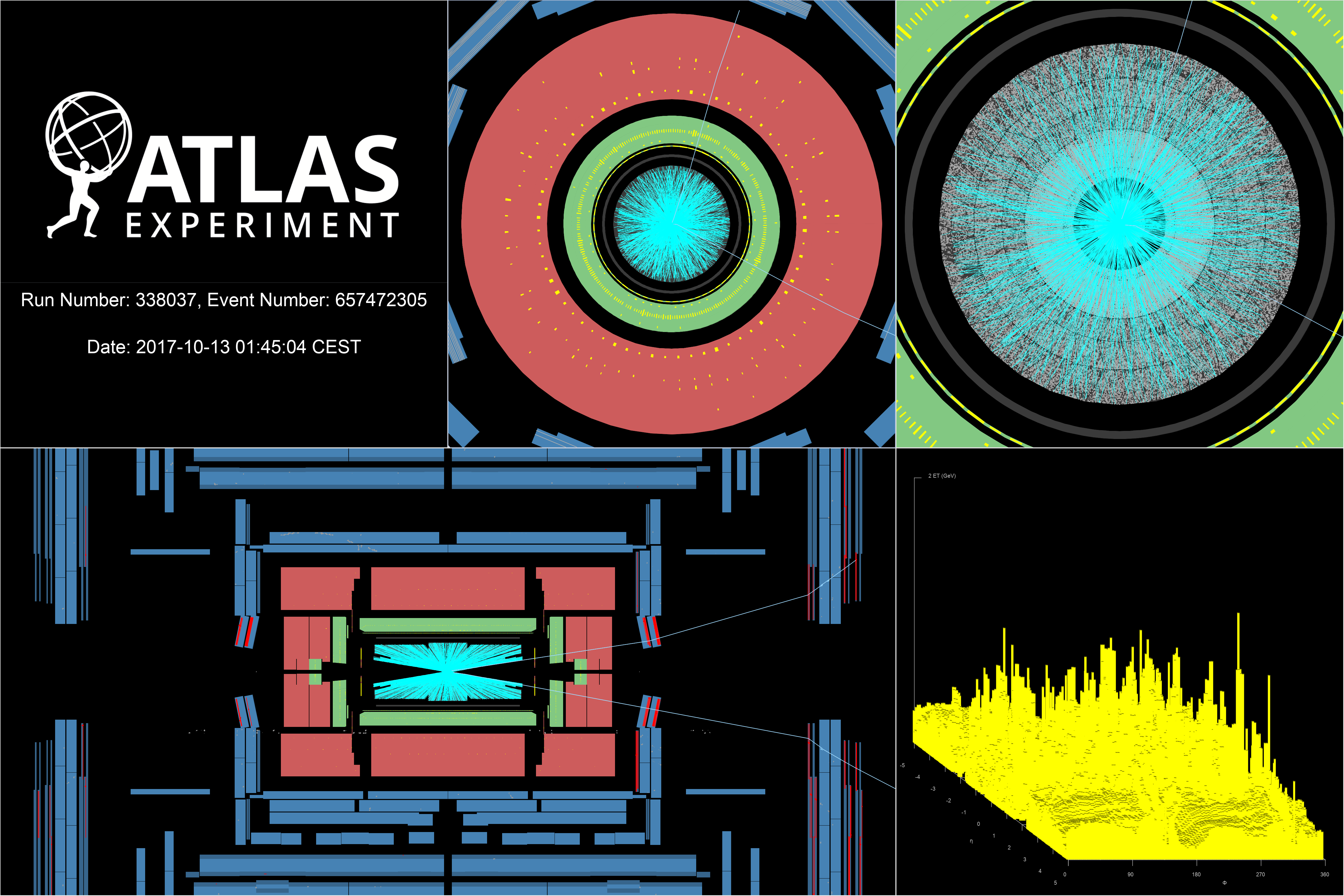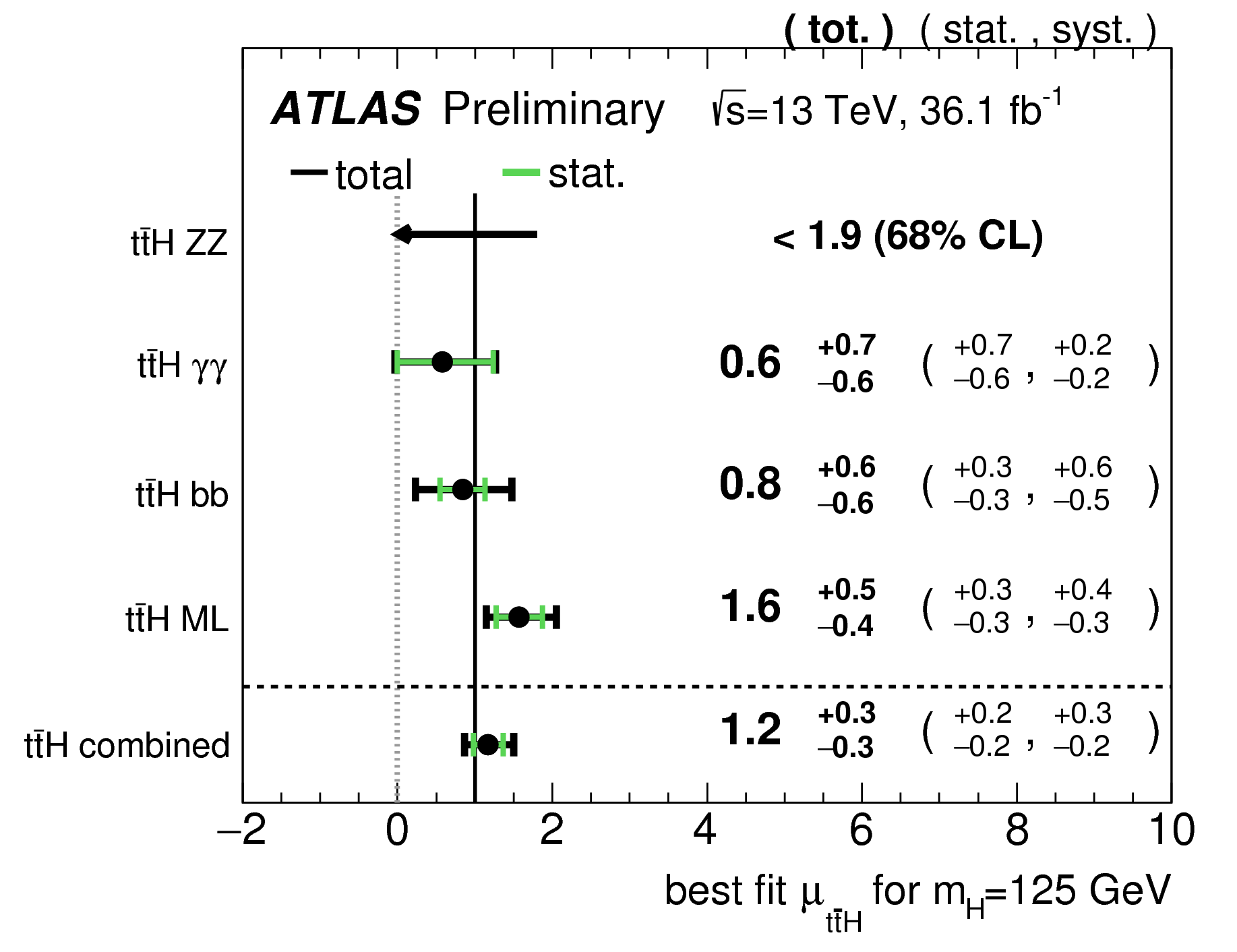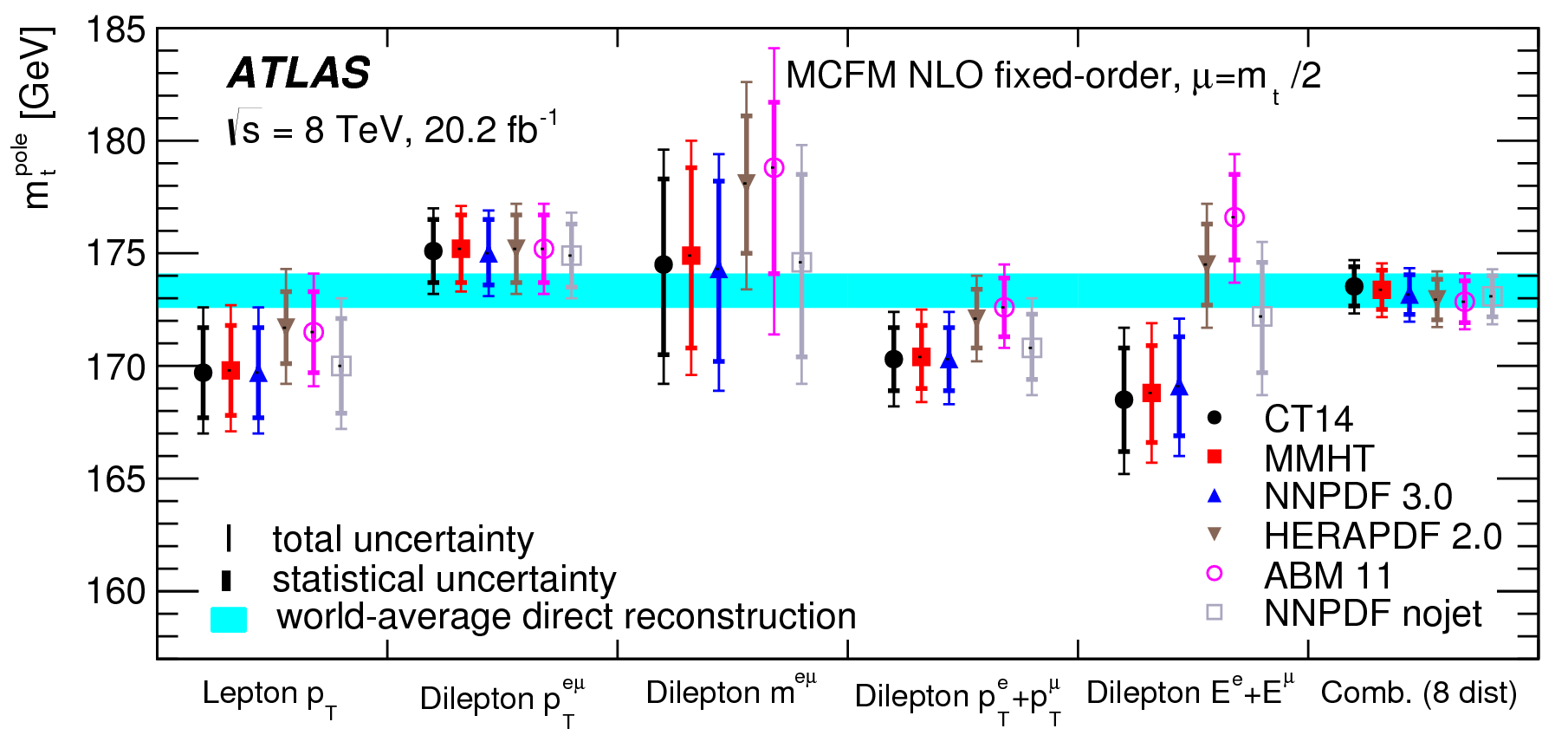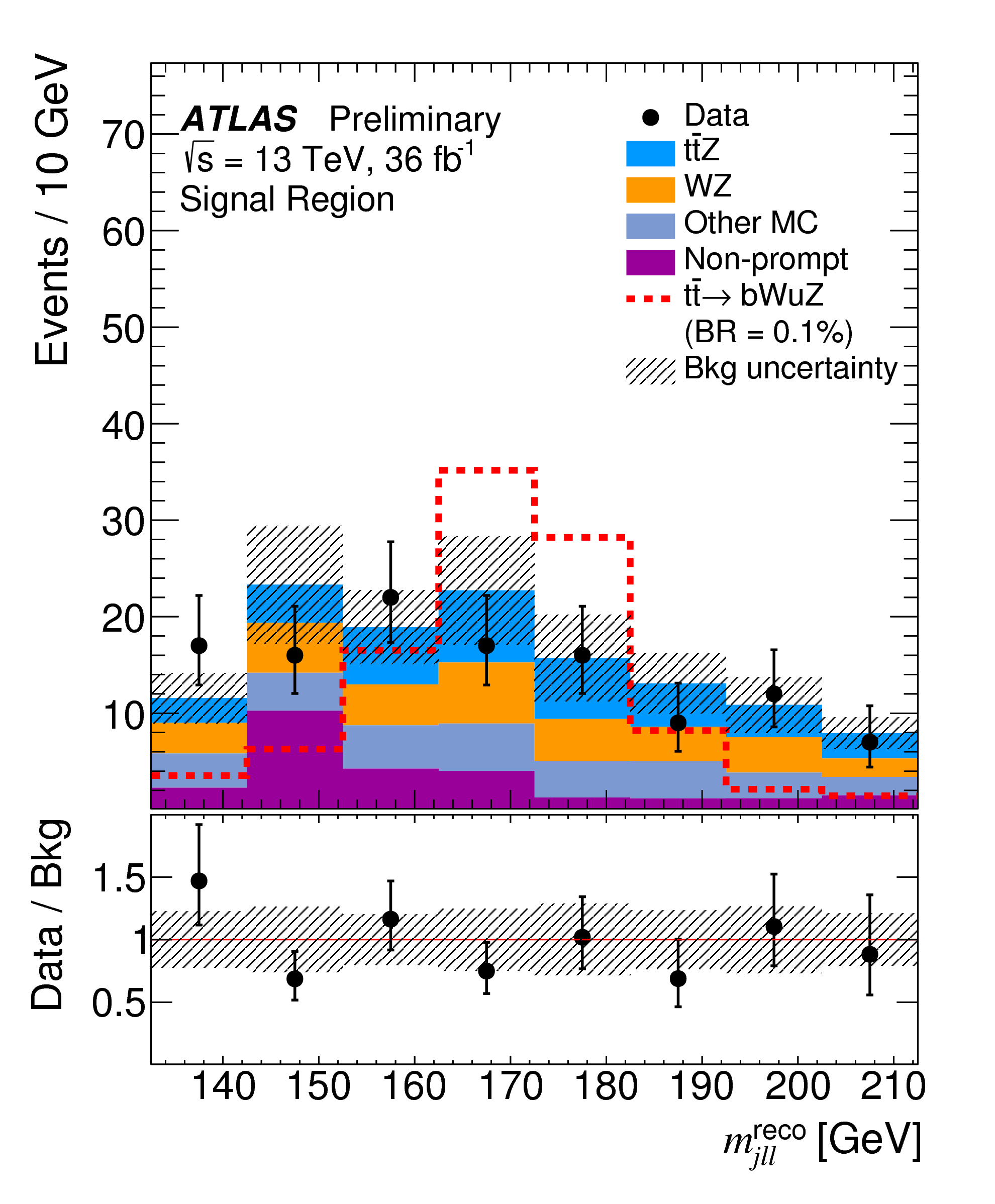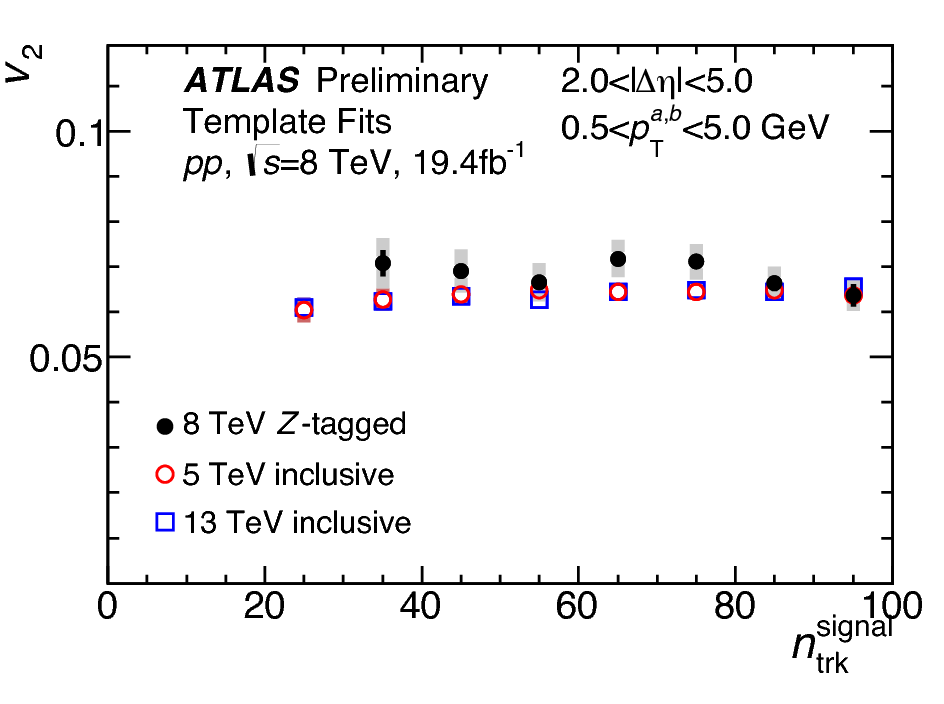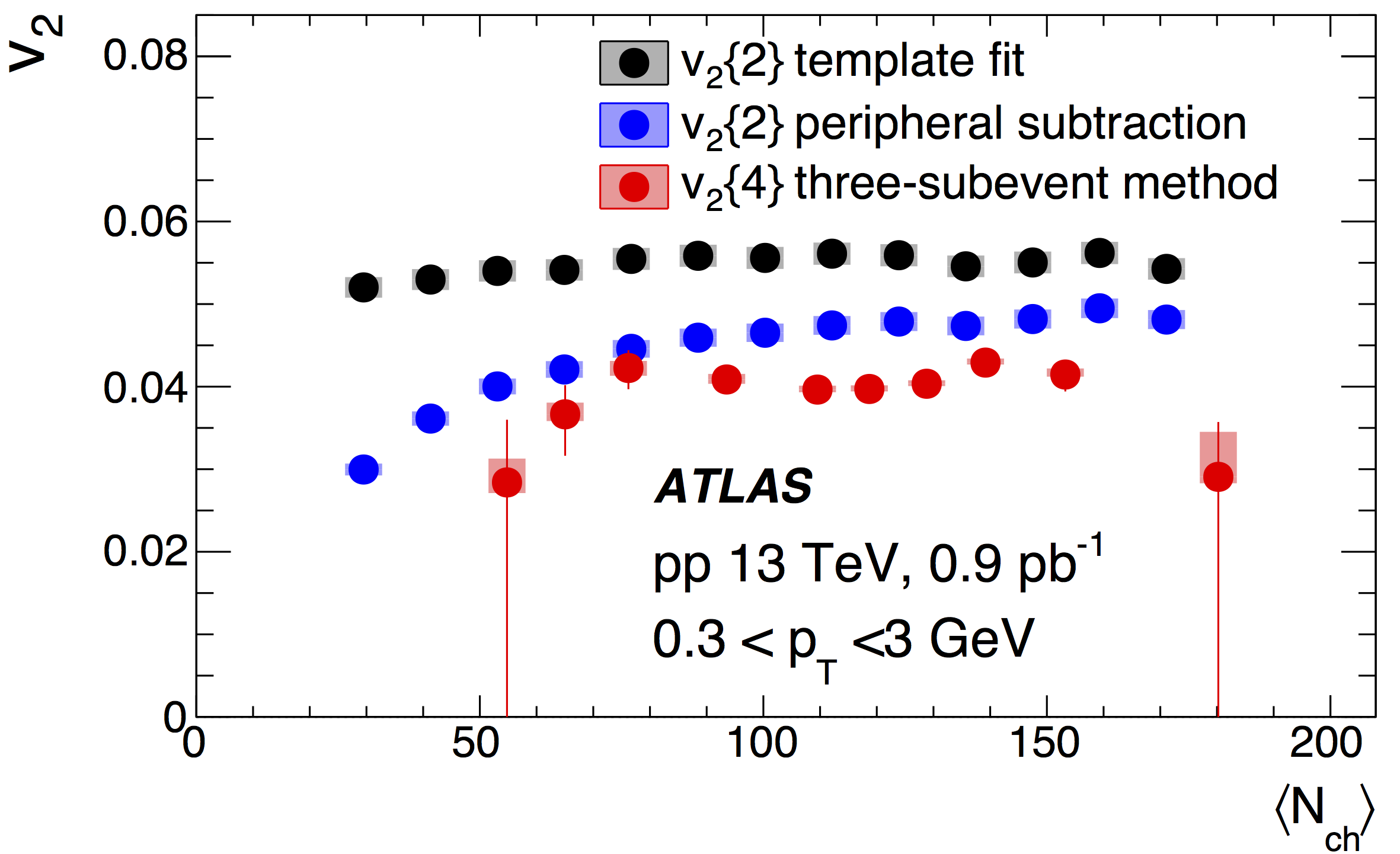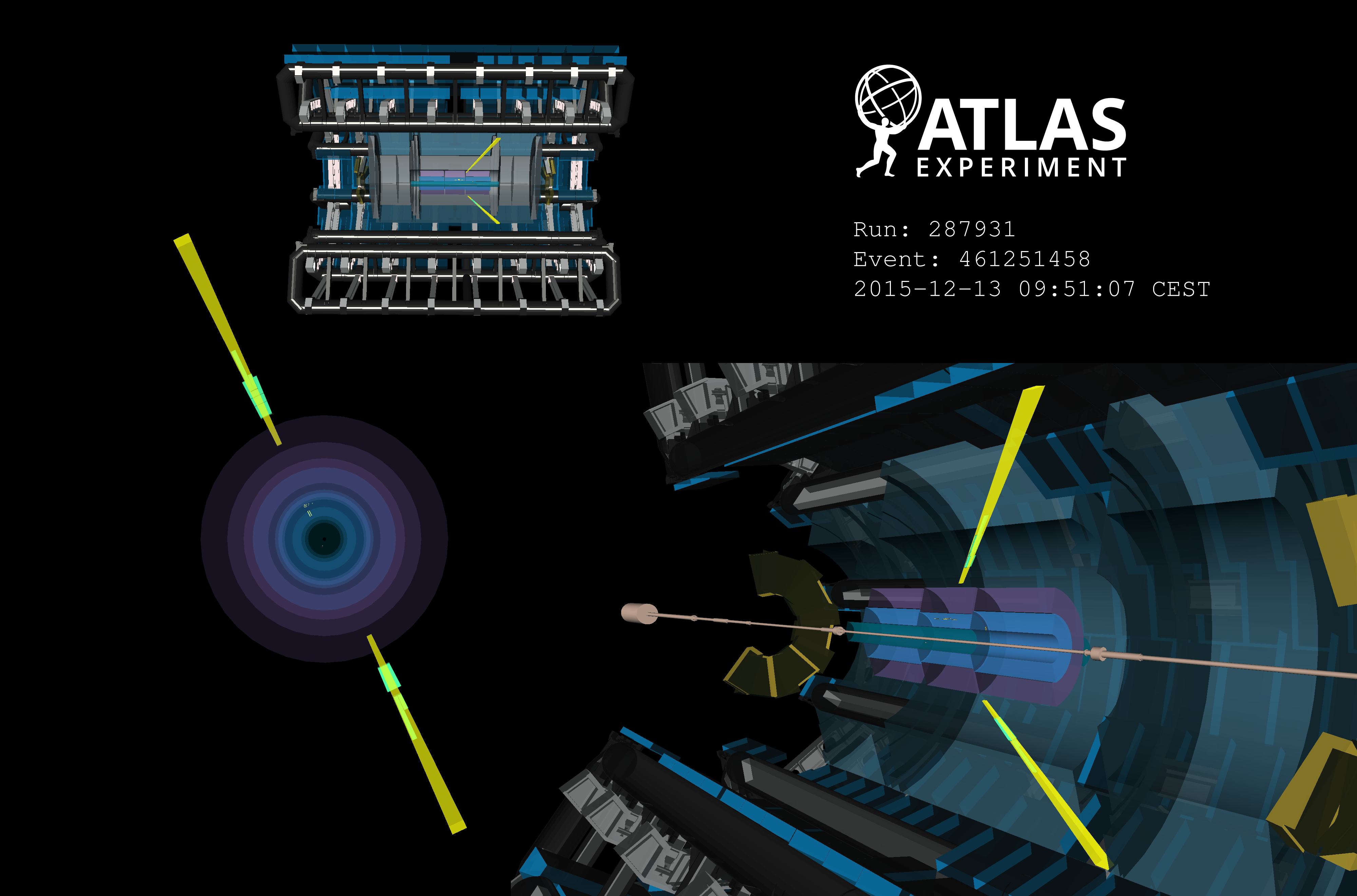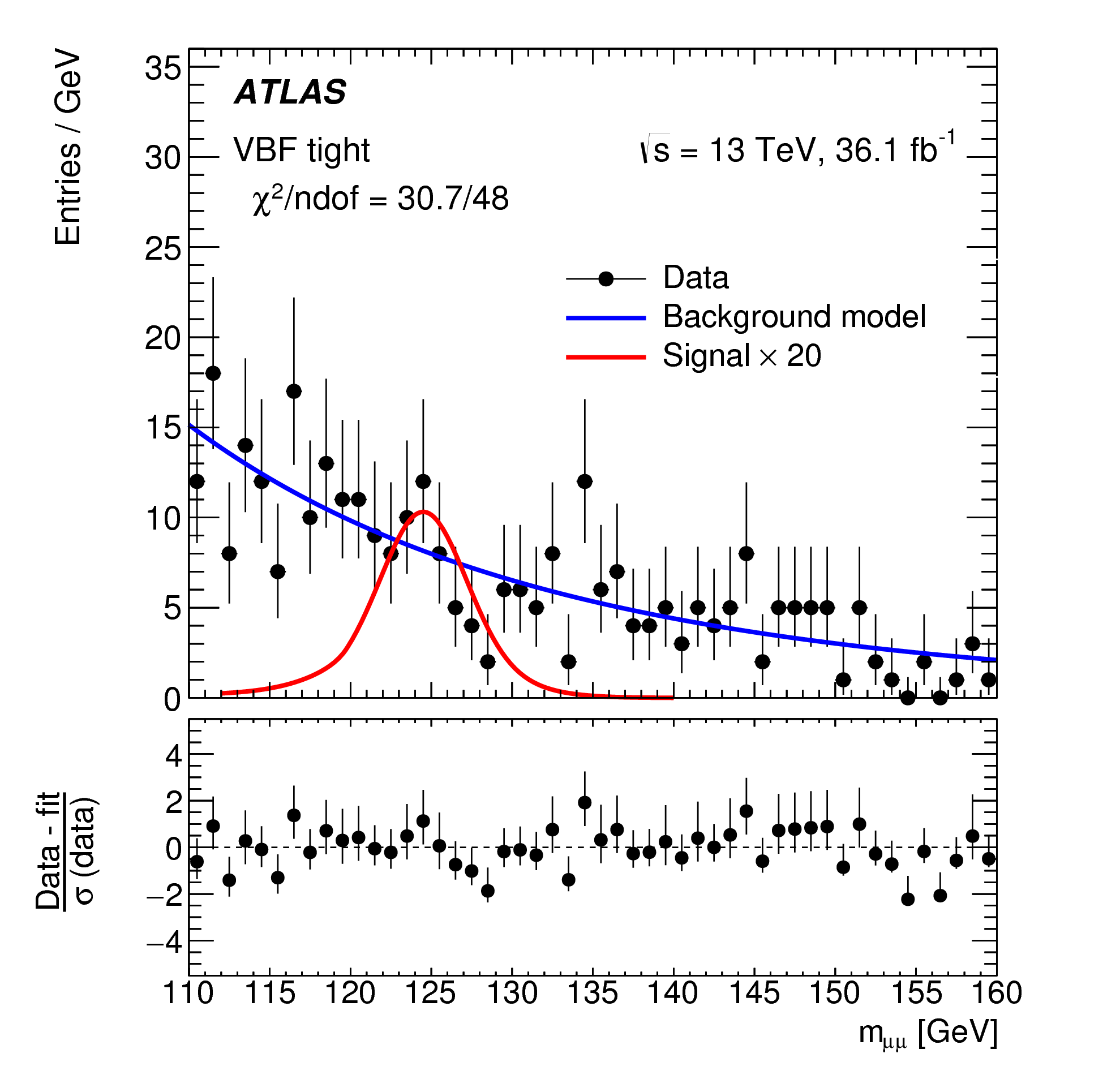New data-collection method aids in the hunt for new physics
What do you do when you produce more data than you can handle? This might seem like a strange question for experimental physicists, but it’s a problem that the ATLAS detector faces every day. While the LHC continues to produce ever-higher rates of proton collisions, the detector can only record data at a fixed rate. Therefore, tough choices must be made about what events to keep. This is not a decision made lightly – what if the thrown-away data contain some long-sought new particles beyond those of the Standard Model.
The exploration of the Higgs boson continues
Discovering the Higgs boson can be likened to finding a new continent. While a momentous event in itself, the most exciting part remains the exploration of the new land! In a new result presented today at the Rencontres de Moriond, the ATLAS collaboration examined the Higgs boson decaying into two W bosons
New winners of the ATLAS Thesis Awards
News |
First high-precision measurement of the mass of the W boson at the LHC
In a paper published today in the European Physical Journal C, the ATLAS Collaboration reports the first high-precision measurement at the Large Hadron Collider (LHC) of the mass of the W boson. This is one of two elementary particles that mediate the weak interaction – one of the forces that govern the behaviour of matter in our universe. The reported result gives a value of 80370±19 MeV for the W mass, which is consistent with the expectation from the Standard Model of Particle Physics, the theory that describes known particles and their interactions.
ATLAS studies the dynamics of very high-momentum top quarks
The top quark – the heaviest known fundamental particle – plays a unique role in high-energy physics. Studies of its properties have opened new opportunities for furthering our knowledge of the Standard Model. In a new paper submitted to Physical Review D, the ATLAS collaboration presents a comprehensive measurement of high-momentum top-quark pair production at 13 TeV.
Measurements of weak top quark processes gain strength
The production of top quarks in association with vector bosons is a hot topic at the LHC. ATLAS first reported strong evidence for the production of a top quark in association with a Z boson at the EPS 2017 conference. In a paper submitted to the Journal of High-Energy Physics, the ATLAS experiment describes the measurement of top-quark production in association with a W boson in 13 TeV collisions.
Reaching out across cultures
This past Spring, I had the opportunity to travel to Taos, New Mexico, USA, to work with artist Agnes Chavez, on one of her “Projecting Particles” workshops. Her innovative programme aims to develop STEM (Science, Technology, Engineering, Math) skills in students aged 8 and up, employing a mixture of science education and artistic expression. It is a winning combination for everyone involved.
Blog |
Searching for supersymmetric Higgs bosons on the compressed frontier
The Standard Model has a number of puzzling features. For instance, why does the Higgs boson have a relatively low mass? Could its mass arise from a hidden symmetry that keeps it from being extremely heavy? And what about dark matter? While the Standard Model has some (almost) invisible particles, like neutrinos, those particles can’t account for all of the dark matter observed by cosmological measurements.
Squeezing sleptons at the LHC
Supersymmetry (SUSY) is an extension of the Standard Model that predicts the existence of “superpartners” with slightly different properties compared to their Standard Model counterparts. Physicists have been searching for signs of SUSY for over forty years, so far without success, which makes us think that SUSY particles — should they exist — are also heavier than particles in the Standard Model. However, in order for SUSY to help mitigate some problems with the Higgs boson sector of the Standard Model, SUSY particles should not be too heavy. And if some SUSY particles are relatively light, then they should be produced copiously at CERN’s Large Hadron Collider (LHC). So for SUSY to remain an attractive theory of nature, it must be hiding in plain sight in LHC data.
Explore virtual CERN with ATLAScraft
Enter the world of particle physics with the newly-launched ATLAScraft! Players can explore the CERN campus, shrink down to the size of a particle, and even conduct their own “experiments” in educational minigames.
News |
Broken symmetry: searches for supersymmetry at the LHC
A commentary by ATLAS physicists Paul de Jong and George Redlinger on the history, progress and future of the search for supersymmetry.
Feature |
Behind the scenes at ATLAS Week
A few times a year, the large LHC collaborations such as ATLAS organise an internal overview session. This photo essay will take you to the most recent of these “ATLAS Weeks” – giving you a glimpse behind the curtain, and exploring this essential part of the collaboration structure and life.
News |
Noble nuclei open new doors in ATLAS physics
Take something you think you understand, change it and see what happens. Earlier this month, the ATLAS Experiment put this basic scientific principle to the test during the first Large Hadron Collider (LHC) xenon run.
News |
ATLAS finds evidence of the Higgs boson produced in association with a pair of top quarks
The ATLAS collaboration has presented evidence of “ttH production”, a rare process where a pair of top quarks emits a Higgs boson. Observing this process would provide new insight into the Higgs mechanism and allow for new studies of how unknown physics might (or might not) change the behaviour of this fundamental particle.
Photon-tagged jet quenching in the quark-gluon plasma
Collisions of lead nuclei in the LHC form the hot, dense medium known as the quark-gluon plasma (QGP). Experimentally, the QGP is characterized by the collective flow of emerging quarks and gluons. They fragment into highly collimated “jets” of particles that in turn lose energy through a phenomenon known as “jet quenching”. Studying this effect can help improve our understanding of quantum chromodynamics, the theory of the strong nuclear interaction that governs the behaviour of the QGP.
Studying fragments of the top quark
Using Run 1 data, ATLAS reports a new differential production rate measurement of top quark pairs and a precise new determination of the top quark mass.
The art of physics
I have been doing some work with artists recently. Not that I’m planning a career change, you know: I just love to talk about my research to anyone who is prepared to listen, and lately it’s been with artists. Ruth Jarman and Joe Gerhardt, aka Semiconductor, are internationally renowned visual artists who in 2015 won the Collide@CERN Ars Electronica Award and spent a two-month residency at CERN. Like myself, they live in Brighton, which is also home to the University of Sussex, where I work.
Blog |
Hunting down forbidden decays of the top quark
Ordinary matter is made of just three kinds of elementary particles: up and down quarks, which form the atomic nucleus, and electrons, which surround the nucleus. But the rest of nature is not so straightforward: heavier forms of quarks and leptons are produced regularly at particle accelerators.
ATLAS LIVE: Celebrating 25 years of discovery
To celebration of its 25th anniversary, ATLAS is hosting a series of Facebook live events today, Monday 2 October 2017. Explore key locations around CERN - including the ATLAS control room, Building 40 and the ATLAS TileCal workshop - while learning about the physics, construction and history of the ATLAS Experiment.
News |
ATLAS and CMS look forward with the top quark
The top quark, the heaviest known elementary particle, has a unique place in the Standard Model. By precisely measuring its properties, ATLAS physicists can probe physics beyond our current understanding.
On top of the top: ATLAS highlights from the TOP2017 workshop
The ATLAS collaboration presented exciting new results at the 10th International Workshop on Top Quark Physics (TOP2017), held in Braga (Portugal). The conference, which concluded today, brought together experimental and theoretical physicists specializing in the heaviest known elementary particle: the top quark.
News |
Finding a haystack in a field of haystacks
In order to produce rare physics phenomena, such as the Higgs boson or possible signs of new physics, the Large Hadron Collider (LHC) collides tens of millions of protons per second. Under such conditions, around 20 simultaneous proton-proton interactions occur in each beam crossing. Thus, additional collisions called “pile-up” are recorded along with the collision of interest. Together, they form a single event for analysis.
Exploring the nature of the “ridge” in small systems
When ultra-relativistic heavy ions collide, a new state of hot and dense matter – the quark–gluon plasma (QGP) – is created. One of the key features for this state is the observation of long-range azimuthal angle correlations between particles emitted over a wide range of pseudorapidity. This phenomenon is often referred to as the “ridge”.
ATLAS sees first direct evidence of light-by-light scattering at high energy
Physicists from the ATLAS experiment at CERN have found the first direct evidence of high energy light-by-light scattering, a very rare process in which two photons – particles of light – interact and change direction. The result, published today in Nature Physics, confirms one of the oldest predictions of quantum electrodynamics (QED).
Exploring rare decays of the Higgs boson
Since discovering a Higgs boson in 2012, the ATLAS and CMS collaborations have been trying to understand whether this new particle is the Higgs boson as predicted by the Standard Model, or a Higgs boson from a more exotic model containing new, as yet undiscovered, particles. The answer lies in the properties of the Higgs boson.

